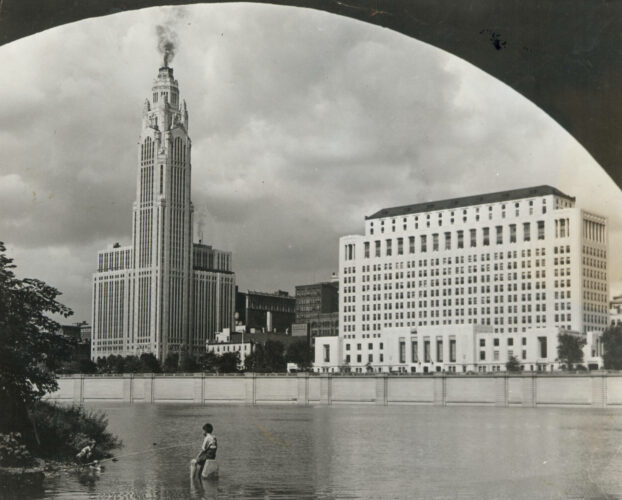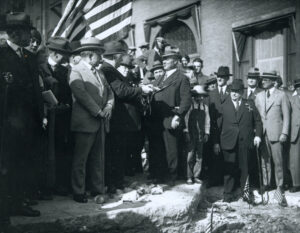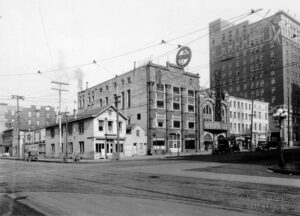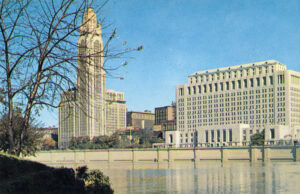The Star of the Capital City’s Skyline

Those who are familiar with LeVeque tower may recognize it for its colorful light displays, denoting current holidays or awareness months. Located at 50 West Broad Street, Columbus, Ohio. The building was commissioned, in the 1920s, by the American Insurance Union and called “The Citadel.” They broke ground on September 23, 1924 and worked until completion, on September 21, 1927.

Designed by the architect C. Howard Crane, in the Art Deco style, LeVeque Tower stands 555 feet 5 inches tall and is 47 stories. It was the tallest building in Columbus from 1927 to 1974 and remains the second tallest today. Originally the tower had a large brick smokestack coming out of the top. The iconic floodlights were not installed until 1989. At first, the top floors were illuminated with white light, but later theatrical gels were installed to add colored lights. Presently, the floodlights are computer-controlled LED lights.
After the tower’s completion, the American Insurance Union (AIU) moved into the 19th and 20th floors and rented the remainder of the building. During the Great Depression, AIU went bankrupt, and the building was sold to real estate investors Leslie LeVeque and John Lincoln. In 1945, it was renamed the LeVeque-Lincoln Tower. The LeVeque-Lincoln tower was made a historic landmark in 1975 and in 1977 the name was officially changed to the LeVeque Tower.

To understand how the name changed from Citadel to LeVeque, you need to learn more about the LeVeque family. Leslie LeVeque was a graduate engineer and came to Columbus after World War I. He taught in the engineering college at Ohio State University and eventually became a prominent real estate investor, in the city of Columbus.
On Sunday, May 5, 1946, Leslie, and his wife Elsa were travelling home from a trip to Blue Hill, Maine when their twin-engine airplane crashed into Parker Mountain, due to foggy weather conditions. Tragically, the couple and their pilot (Robert C. Johns) perished in the accident.
Following this devasting loss, Frederick and daughter-in-law Katherine LeVeque inherited the tower. The LeVeque’s were prominent figures in the Columbus community. Frederick was active in numerous civic projects and received a distinguished citizen award from the Home Builders of Greater Columbus for his many contributions and outstanding service. By some terrible twist of fate, in January of 1975 Frederick LeVeque perished in a plane crash that took the lives of four others, including Edgar Wolfe Jr. (then publisher of The Dispatch Printing Co.).

After the tragic passing of her husband, Katherine LeVeque took possession of the city’s first skyscraper. Instead of selling the property, she learned what she needed to know to manage the day-to-day operations. Throughout this process, Katherine discovered that the building also included the Palace Theatre. She invested $3 million in restoring the theatre and The Palace reopened as a performing-arts hall in 1980. LeVeque sold the Palace to CAPA in 1989 so that the theater would be operated and maintained for the community’s use. In 1996, the Katherine S. LeVeque lobby of the Palace was named in her honor. Katherine LeVeque was a true Renaissance woman of her time. She lived on the tower’s 41st floor until 2011 and died in 2014.
Since her passing, the tower has changed hands several times. Currently, LeVeque tower is owned by Tower 10 LLC, who have led in the effort of preserving this National Registered Historic Landmark.
Thank you to Aimee Truitt, Catalog & Metadata Coordinator at the Ohio History Connection, for this week’s post!



Leave a Reply
You must be logged in to post a comment.